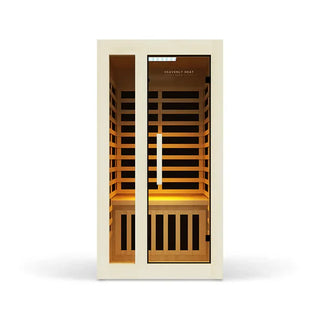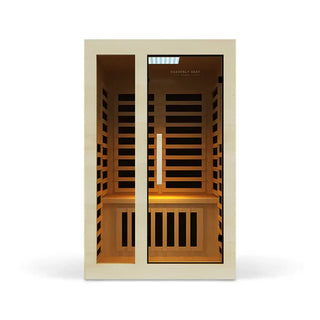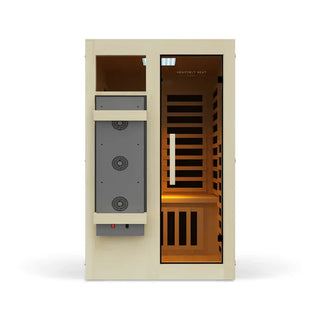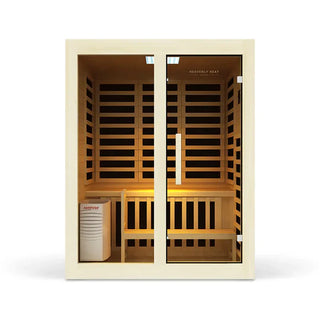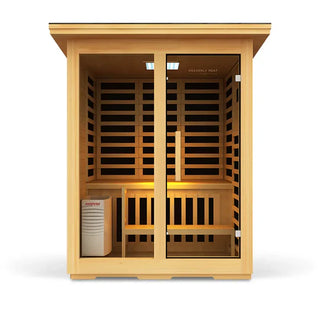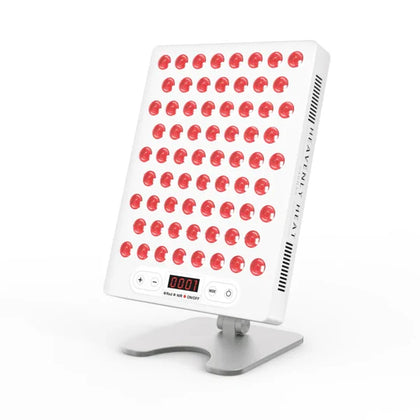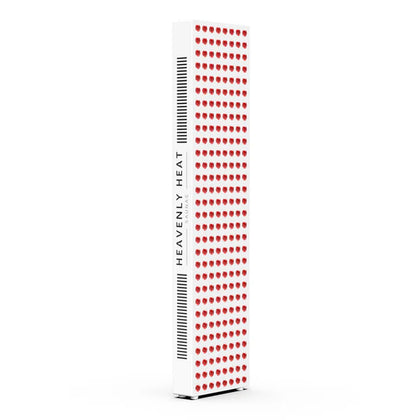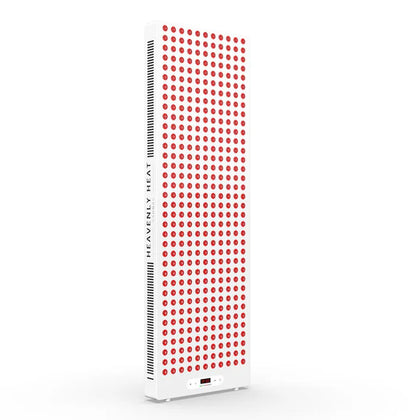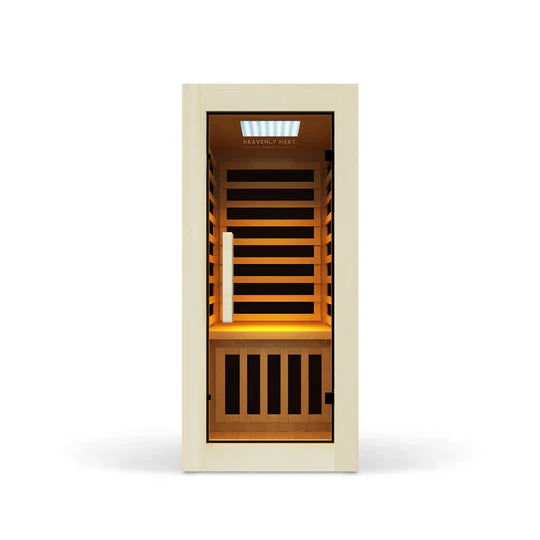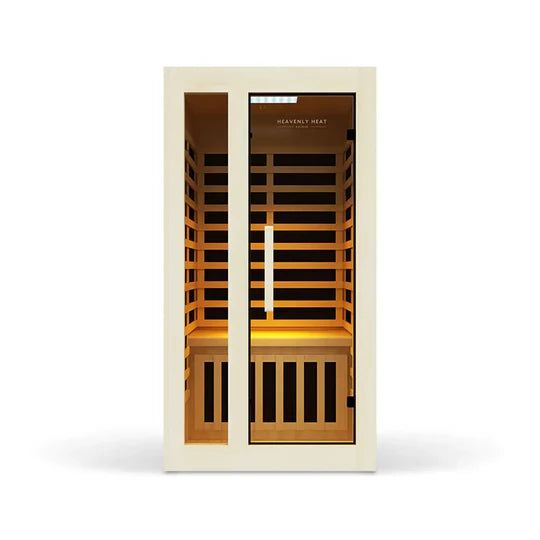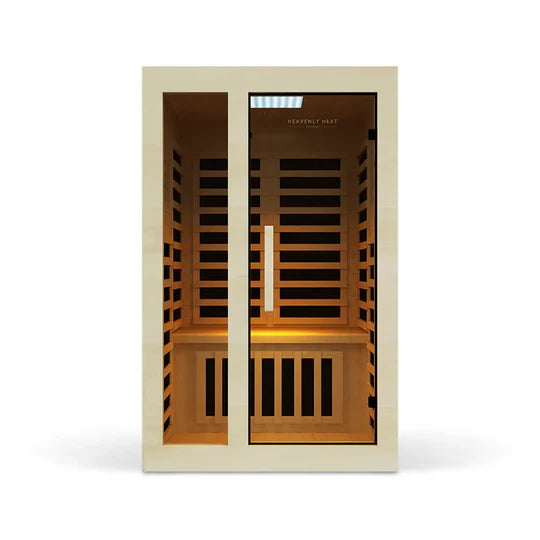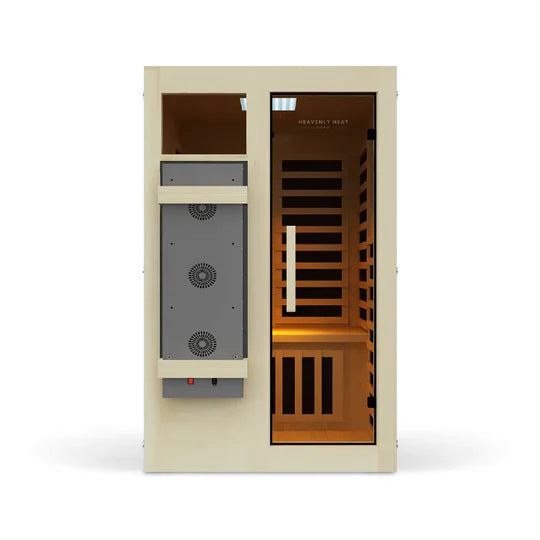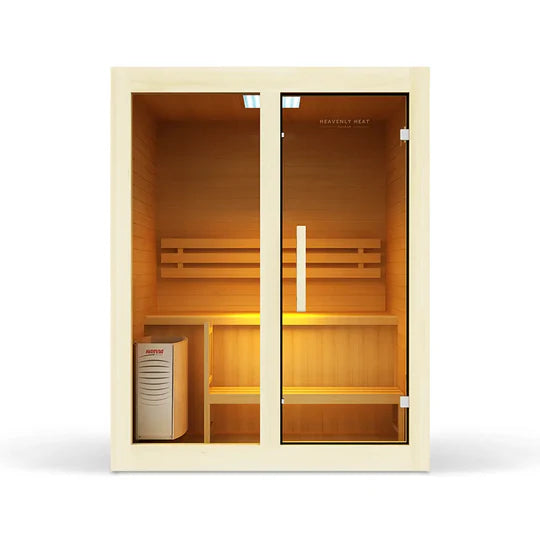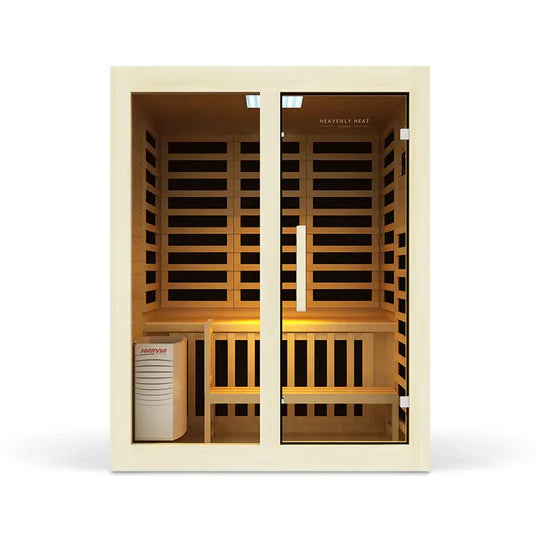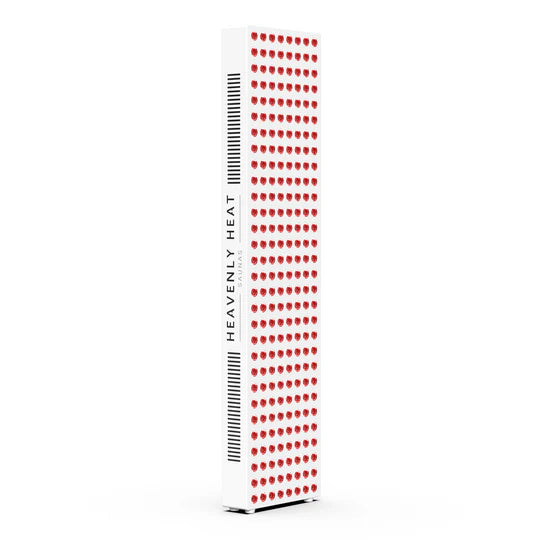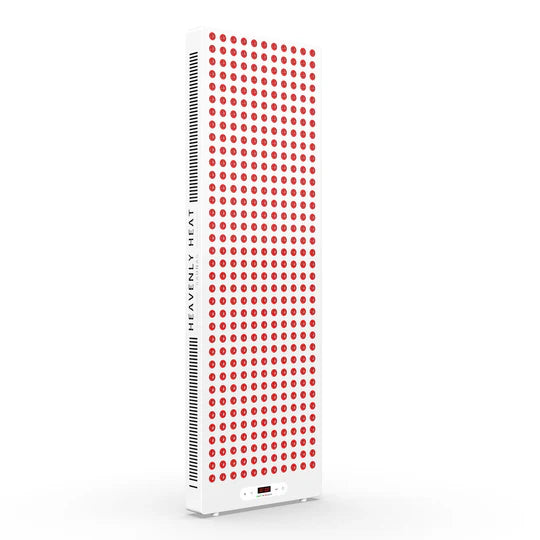Red Light Therapy vs. Cold Laser: Key Differences & Benefits
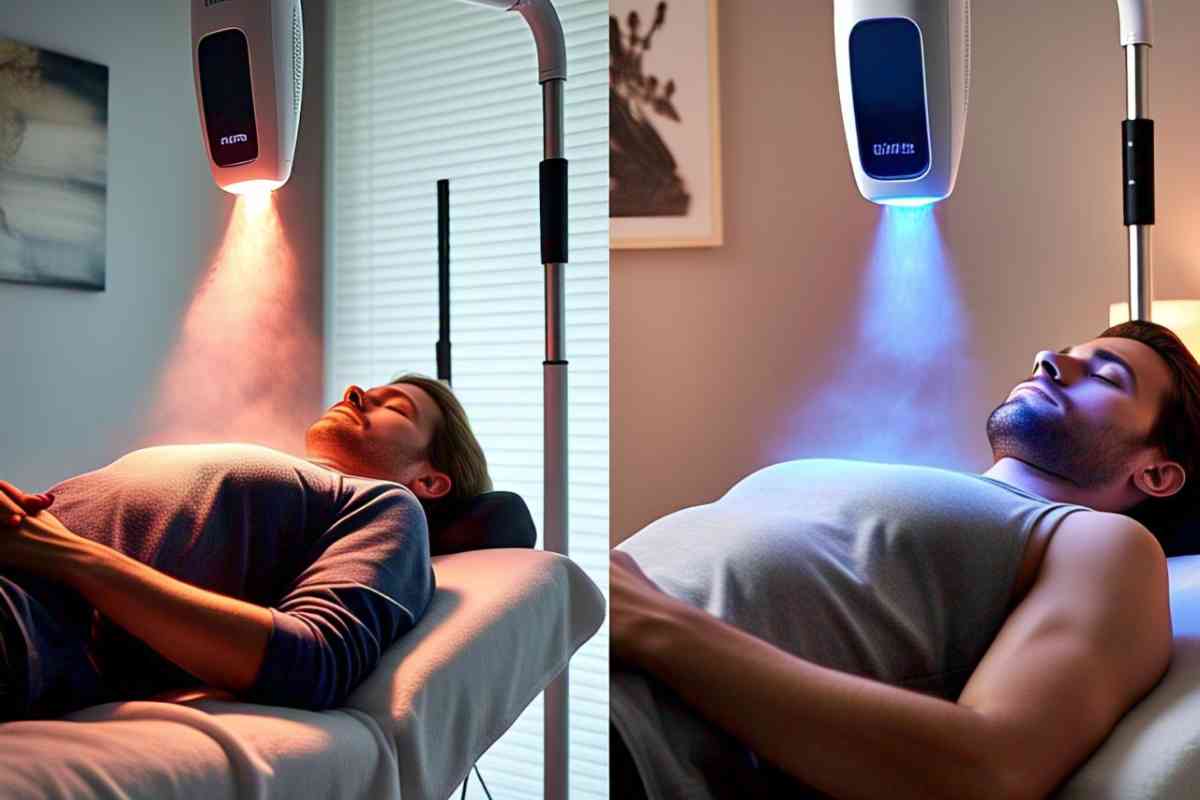
Red light therapy and cold laser therapy are becoming popular for their healing and pain-relief benefits.
Though they share similar goals, each uses different methods to achieve results. In this article, we’ll explore the key differences, how to use each therapy, and the safety considerations, helping you understand which option might be right for you.
Table of contents
Key Takeaways
-
Red light therapy uses low-wavelength red light to stimulate tissue repair and treat surface-level issues.
-
Cold laser therapy targets deeper tissues, making it effective for conditions like arthritis and chronic pain.
-
Consistency is key for both therapies, requiring regular sessions for noticeable results.
-
Red light therapy is easier to use at home, while cold laser therapy often requires professional guidance.
-
Always consult a healthcare provider before starting either therapy to ensure safety and effectiveness.

overview of both therapies : Red light therapy vs Cold laser Therapy
- Introduction to Both Therapies: Red light therapy and cold laser therapy are both non-invasive treatments that use light to promote healing and relieve pain.
- What is Red Light Therapy?: Red light therapy uses low-wavelength red light to penetrate the skin, stimulating cells and boosting energy in the mitochondria.
- Benefits of Red Light Therapy: This helps repair tissue, produce collagen, and improve skin health. Cold laser therapy, on the other hand, uses low-level lasers to target deeper tissues, making it especially effective for nerve damage.
- Benefits of Cold Laser Therapy: By stimulating the regeneration of damaged nerve cells and improving nerve function, it not only reduces inflammation but also helps alleviate chronic pain.
- Key Differences Between the Therapies: While both therapies use light to aid healing, they differ in the type of light and how deeply it penetrates the tissue.
- Best Use Cases for Each Therapy: Red light therapy is ideal for conditions like skin issues, muscle pain, and joint inflammation, while cold laser therapy is more effective for deeper tissue problems, including arthritis and nerve-related pain.
- Shared Health Benefits: Both therapies improve circulation, promote collagen production, and offer a range of benefits for various health concerns.
Red light therapy vs Cold laser therapy :Why are they gaining popularity for pain relief and healing?
- Natural Alternatives for Pain Relief: Red light therapy and cold laser therapy are becoming popular for pain relief and healing, offering a natural alternative to traditional methods.
- How Red Light Therapy Works: Red light therapy uses low-level wavelengths of light to penetrate deep into the skin, reducing pain by increasing blood flow and stimulating the body’s healing processes.
- Scientific Backing for Red Light Therapy: Scientific studies have shown that red light therapy is effective in reducing pain and inflammation, particularly for conditions like cancer treatment side effects, back pain, and tennis elbow,
- A Drug-Free Option for Chronic Pain: This makes it a go-to option for chronic pain management, especially for those looking for drug-free solutions.
- Holistic Pain Management Approach: Chronic pain management involves a combination of therapies and lifestyle changes to reduce pain and improve quality of life.
- Cold Laser Therapy Explained: Cold laser therapy, on the other hand, targets damaged tissues with specific light frequencies to promote cellular repair and reduce inflammation.
- Shared Benefits: Nerve Healing & Recovery: Both therapies enhance nerve regeneration, improving recovery times. In 2024, the market generated USD 121.9 million in revenue, highlighting the growing demand for cold laser therapy in physiotherapy.
- Why People Choose Red Light Therapy: People turn to red light therapy because it’s non-invasive, provides quick relief, and reduces the need for pain medications, offering a safer way to heal naturally.
- Safety and Caution: While red light therapy is generally safe when used correctly, it’s important to follow the guidelines as improper use could potentially cause skin or eye damage.
- Lack of Long-Term Research: Though there are minimal side effects, long-term safety has not been fully established, making it essential to approach with caution.

Key Differences Between Red Light Therapy and Cold Laser Therapy
Wavelengths and Light Penetration
- Effective Wavelength Range: Red light therapy generally operates in the 600–1000 nm range, affecting surface to moderate tissue depth.
- Cold Laser Therapy Depth Potential: Cold laser therapy also uses similar wavelengths, but specific devices can penetrate deeper tissues depending on power and application.
- Healing Effects by Wavelength: Different wavelengths within this range have varying effects on healing. For instance, light treatments at 635 and 810 nm have been shown to promote wound healing by encouraging collagen accumulation, neovascularization, and re-epithelialization.
- 810 nm: Most Noticeable Healing: A study on dermal abrasion in mice found that 810 nm light treatment produced the most noticeable healing, with well-organized thick epithelium and enhanced fibrosis.
- Ineffective or Harmful Wavelengths: In contrast, wavelengths like 730 and 980 nm showed little to no healing, with the 980 nm wavelength even exacerbating tissue damage, causing edema and increased inflammatory response.
Light Intensity and Power Output
- Power Range in Devices: Red light therapy devices typically use lower power (5–500 milliwatts) for broader application, while cold laser devices use higher power to treat deeper, localized tissues more intensively.
- Adjustable Output for Targeted Treatment: By adjusting the power output, red light therapy can be tailored for more focused treatment, allowing for deeper tissue penetration and enhanced blood flow and pain relief, making it more effective for targeting specific areas.
- Deep Penetration for Faster Healing: This increased power in cold laser therapy allows it to penetrate deeper into the tissues, providing faster and more effective results for healing compared to red light therapy, especially when targeting deeper muscle and tissue layers.
Treatment Method and Equipment
- Equipment Type for Red Light Therapy: Red light therapy uses LED panels or handheld devices to cover larger areas, making it convenient for home use.
- Ease of Use for Home Treatment: Handheld devices are easy to operate and require no special training, offering a simple, safe, and effective option for personal treatment.
- Usage Frequency and Safety Tips: To ensure the best results, choose an FDA-cleared device and follow the recommended guide of using red light therapy pads 2-3 times per day.
- Benefits of Broad Coverage: This helps maximize both safety and effectiveness, allowing you to get the most out of your therapy sessions.
- Comparison: Coverage vs. Precision: This broad coverage helps treat larger surface areas more efficiently. Cold laser therapy, on the other hand, uses focused beams of light that target specific areas, often requiring trained professionals for optimal results.
- Ideal Use Cases: Red Light vs. Cold Laser: While laser therapy offers precision for deeper or more localized treatment, LED devices provide a more accessible solution for general use.
Treatment Areas and Applications
Red light therapy is suitable for skin rejuvenation, wound healing, and surface-level inflammation, which occurs when the immune system reacts, causing redness, rash, or blistering.
Cold laser therapy is ideal for musculoskeletal issues, such as arthritis, tendonitis, and nerve-related pain.
Clinical Uses
- Red Light Therapy in Dermatology: Red light is often used in dermatology for acne, anti-aging, and scar treatment.
Dermatologists seamlessly incorporate red light therapy into treatment plans by using it to:
Target inflammation
Reduce acne-causing bacteria
Stimulate collagen production, which accelerates healing and improves the appearance of scars.
Cold Laser Therapy in Physical Rehabilitation: Cold laser therapy is prevalent in physical therapy and rehabilitation clinics for deeper tissue injuries and neuropathy.
Emerging Applications in Inflammatory Conditions: recent research highlights cold laser therapy's growing potential in treating inflammatory conditions like chronic rhinosinusitis, offering a non-invasive alternative to traditional therapies.
Promising Tool for Skin and Joint Diseases: This makes it especially promising for treating skin and joint diseases, where accessibility to treatment is key.
Healing Mechanism
Both enhance mitochondrial activity, boosting cellular energy to aid in tissue repair.
Mitochondrial activity involves energy production, metabolism, and cellular functions like ATP generation and repair.
Red light focuses on surface tissues, while cold lasers target deeper layers like joints, tendons, and nerves.
Summary
In short, red light therapy is great for skin and surface healing, while cold laser therapy targets deeper tissues. Depending on your needs whether it’s pain relief or skin repair choosing the right therapy helps you heal faster, safer, and more effectively.
How to use red light therapy?
Start with Short Sessions
For beginners, start with shorter sessions (5-10 minutes). As your body adjusts, you can gradually increase the duration. Short sessions are effective and deliver therapeutic benefits over time.
Be Consistent
To see results, aim for regular sessions several times a week. Consistency is crucial for long-term results, as skipping sessions may slow progress.
Position the Light Correctly
Place the red light therapy device about 6 to 12 inches from the skin for optimal results. Ensure the area you're targeting is fully covered for maximum benefit.
Use on Clean Skin
Always use red light therapy on clean skin to ensure the light penetrates deeply without any obstruction from dirt or makeup.
Protect Your Eyes
Eye protection is essential during red light therapy. Wear protective glasses designed for light therapy to avoid potential eye strain or damage.
Eye strain occurs from intense eye use, causing discomfort like dry eyes and blurred vision.
Summary
Red light therapy works best when you use it consistently, correctly, and safely. Start slow, keep your skin clean, protect your eyes, and be patient. Stick with it, and you’ll gradually notice the benefits your skin and body will thank you!
How to use cold laser therapy?
Consult with a Healthcare Provider
Before starting cold laser therapy, consult your doctor to ensure it is safe and suitable for your condition. They will evaluate your health history and give you guidance.
Stick to the Treatment Schedule
Consistency is key when using cold laser therapy. Missing sessions can delay your healing process, so try to stay on schedule as advised by your healthcare provider.
Use Protective Eyewear
Always wear protective eyewear during cold laser therapy to shield your eyes from the intense light emitted by the laser.
Target Specific Areas
Cold laser therapy is most effective when used on specific areas, such as joint pain or tendonitis. The laser should be focused on the affected area for the best results.
Ensure Proper Device Settings
Adjust the settings on your cold laser device based on your healthcare provider’s recommendations. Correct power settings ensure effective treatment for your condition.
Stay Still During Treatment
Remain still during your cold laser therapy sessions to allow the laser to target the area accurately and penetrate deeper into the tissue.
Avoid Extreme Temperature Exposure Post-Treatment
- Heat after therapy can make things worse: Exposing the treated area to high temperatures after cold laser therapy can increase inflammation, making the condition feel worse instead of better.
- Too much cold can slow your healing: Just like heat, extreme cold can also be harmful. It may slow down your body’s natural recovery, delaying the results you’re expecting.
- Jumping between hot and cold environments affects your progress: Going from a hot place to a cold one (or vice versa) can interfere with how well the therapy works. These sudden shifts in temperature confuse your body and can reduce the benefits.
- Staying in a normal, comfortable temperature helps healing: A steady, moderate temperature supports your body’s healing process and helps the therapy do its job properly.
- Feeling comfortable helps your body heal faster: When your body feels comfortable, it naturally recovers better. Avoiding temperature extremes keeps you relaxed and speeds up recovery.
Summary
To get the most from cold laser therapy, follow your doctor’s advice, stay consistent, protect your eyes, target the right areas, and avoid extreme temperatures. With proper use, this therapy can help reduce pain and speed up healing safely and effectively.
Are There Any Safety Concerns with Red Light Therapy or Cold Laser Therapy?
- Most people can use these therapies safely: Red light and cold laser therapy are generally safe for most people, as long as basic guidelines are followed.
- Some people should avoid red light therapy: People who have sensitivity to light (photosensitivity) could have negative reactions and should stay away from red light therapy.
- People with serious health problems need to be extra careful: Those with cancer, active infections, or certain other conditions should use cold laser therapy only with a doctor’s approval.
- Using red light therapy for a long time might have unknown effects: Short-term use looks safe, but experts still don’t fully understand what happens when it’s used over months or years.
- Doing these therapies too often can hurt your skin or eyes: If you keep using red light or cold laser therapy without proper care, you could end up with eye strain or skin irritation.
- Not protecting your eyes during treatment is risky: Both red light and cold laser therapy can cause eye discomfort or damage if you don’t wear the right eye protection.
- Doing therapy while sick could make things worse: If you have an active infection, using these therapies might cause more harm than good and delay healing.
- It’s always safer to talk to a doctor before starting: To avoid unexpected problems, you should speak with a healthcare provider before beginning any kind of light therapy.
Red light therapy vs Cold laser therapy: Who Should Avoid These Therapies?
- Pregnant people should stay careful with red light therapy: Red light therapy might not be safe during pregnancy, so it’s best to talk to a doctor first before starting it.
- People with pacemakers should avoid cold laser therapy: Cold laser therapy could interfere with pacemakers, making it risky for those who use these heart devices.
- Cold laser therapy isn’t always safe for people with autoimmune diseases: If someone has an autoimmune condition, cold laser therapy might trigger unwanted immune reactions, so extra care is needed.
- Cold laser therapy might not be good for people on chemotherapy: Chemotherapy patients may face delays or complications in recovery if they use cold laser therapy during treatment.
How Do Red Light Therapy and Cold Laser Therapy Devices Compare for Home Use?
- Red light therapy is easier for most people to use at home: Red light devices are usually simple to operate, cost less, and don’t need much experience, making them a good fit for beginners using them at home.
- Cold laser therapy at home needs more care and attention: Cold laser devices are available for home use too, but they often require precise application and may need guidance from a professional to use correctly.
- Red light therapy works better for regular home routines: Because it covers a larger area and is easier to handle, red light therapy fits more naturally into a home care routine than cold laser devices.
- You’ll need to use red light therapy more often to see results: Like other home-use devices (such as at-home laser hair removal), red light therapy needs to be used more frequently and over a longer time to get noticeable results.
- Professional treatments give quicker results than home devices: Home-use devices work well but usually take longer to show results compared to professional-grade treatments, which are more powerful and faster.

Are At-Home Red Light and Cold Laser Devices Safe and Effective?
- You can safely treat pain and swelling at home: When used the right way, both red light and cold laser devices can help with long-term pain and inflammation without needing to visit a clinic.
- Red light is easier and safer for home use: If you're using a device at home, red light therapy is simpler and safer to manage compared to cold laser, which needs extra care and precision.
- Following safety steps protects you and improves results: To avoid mistakes and get real benefits , always use your device the way your therapist recommends, make sure it’s working right, and don’t skip regular checks.
- Professional care gives faster and deeper results: Even though home use helps, professional treatments usually use stronger machines and expert knowledge to reach deeper tissues and give longer-lasting relief.
- With patience, home devices give great long-term value: Clinic sessions may work quicker, but if you stick with it and use your device regularly, home treatment can be very effective over time.
FAQs
Can Red Light Therapy and Cold Laser Therapy Be Used Together for Enhanced Results?
Yes, combining them may provide complementary benefits by reaching different tissue depths, accelerating healing and reducing inflammation more effectively.
How Long Does It Take to See Results from Red Light or Cold Laser Therapy?
Red light and cold laser therapy timelines vary depending on the individual and condition being treated, but both require consistent use for results. Red light therapy typically shows visible improvements in skin or muscle recovery after 2–3 weeks or 6–12 sessions, though some may notice changes sooner. Cold laser therapy often begins relieving pain within a few sessions, with lasting results usually appearing after 4–8 treatments. Both therapies help reduce inflammation, improve circulation, and promote healing, but consistent sessions are essential for noticeable, lasting effects.
Are Red Light and Cold Laser Therapies Effective for Treating Chronic Conditions like Arthritis or Tendonitis?
Both therapies are effective for treating chronic conditions like arthritis and tendonitis. Tendonitis is the inflammation of tendons, causing pain and tenderness near joints. Red light therapy improves circulation and reduces inflammation, alleviating joint stiffness and pain. Cold laser therapy stimulates healing at the cellular level, promoting tissue repair and reducing pain in tendonitis.
Do Environmental Factors (Like Skin Tone or Body Fat Percentage) Affect the Effectiveness of Red Light or Cold Laser Therapy?
Skin tone and body fat percentage can affect the effectiveness of red light and cold laser therapy. Darker skin, with more melanin, may absorb light differently, possibly requiring higher intensity or more sessions for red light therapy. Increased body fat can hinder light and laser penetration, reducing the therapy’s effectiveness, especially for cold laser treatments. Adjusting therapy settings based on skin tone and body composition can ensure more effective results.



